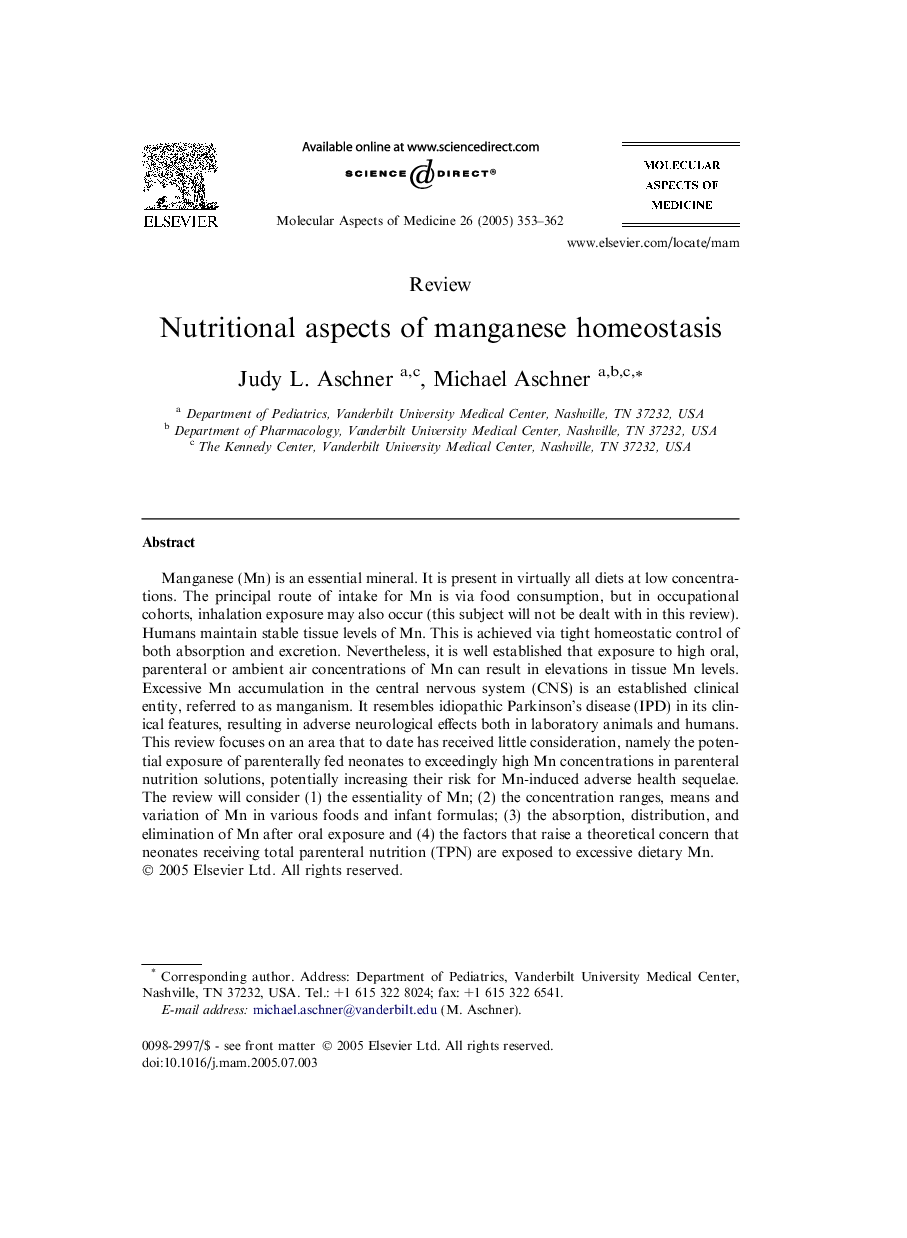| کد مقاله | کد نشریه | سال انتشار | مقاله انگلیسی | نسخه تمام متن |
|---|---|---|---|---|
| 9893154 | 1541489 | 2005 | 10 صفحه PDF | دانلود رایگان |
عنوان انگلیسی مقاله ISI
Nutritional aspects of manganese homeostasis
دانلود مقاله + سفارش ترجمه
دانلود مقاله ISI انگلیسی
رایگان برای ایرانیان
کلمات کلیدی
NASIPDDMT-1NIEHSMn-SOD - MN-SODNational Academy of Sciences - آکادمی ملی علومIdiopathic Parkinson’s disease - بیماری پارکینسون ایدیوپاتیکCNS - دستگاه عصبی مرکزیMn superoxide dismutase - سوپر اکسید دیسموتاز Mncentral nervous system - سیستم عصبی مرکزیDivalent metal transporter 1 - متال فلچر 1Estimated average requirement - پیش بینی مورد نیاز متوسطEAR - گوش
موضوعات مرتبط
علوم زیستی و بیوفناوری
بیوشیمی، ژنتیک و زیست شناسی مولکولی
زیست شیمی
پیش نمایش صفحه اول مقاله

چکیده انگلیسی
Manganese (Mn) is an essential mineral. It is present in virtually all diets at low concentrations. The principal route of intake for Mn is via food consumption, but in occupational cohorts, inhalation exposure may also occur (this subject will not be dealt with in this review). Humans maintain stable tissue levels of Mn. This is achieved via tight homeostatic control of both absorption and excretion. Nevertheless, it is well established that exposure to high oral, parenteral or ambient air concentrations of Mn can result in elevations in tissue Mn levels. Excessive Mn accumulation in the central nervous system (CNS) is an established clinical entity, referred to as manganism. It resembles idiopathic Parkinson's disease (IPD) in its clinical features, resulting in adverse neurological effects both in laboratory animals and humans. This review focuses on an area that to date has received little consideration, namely the potential exposure of parenterally fed neonates to exceedingly high Mn concentrations in parenteral nutrition solutions, potentially increasing their risk for Mn-induced adverse health sequelae. The review will consider (1) the essentiality of Mn; (2) the concentration ranges, means and variation of Mn in various foods and infant formulas; (3) the absorption, distribution, and elimination of Mn after oral exposure and (4) the factors that raise a theoretical concern that neonates receiving total parenteral nutrition (TPN) are exposed to excessive dietary Mn.
ناشر
Database: Elsevier - ScienceDirect (ساینس دایرکت)
Journal: Molecular Aspects of Medicine - Volume 26, Issues 4â5, AugustâOctober 2005, Pages 353-362
Journal: Molecular Aspects of Medicine - Volume 26, Issues 4â5, AugustâOctober 2005, Pages 353-362
نویسندگان
Judy L. Aschner, Michael Aschner,